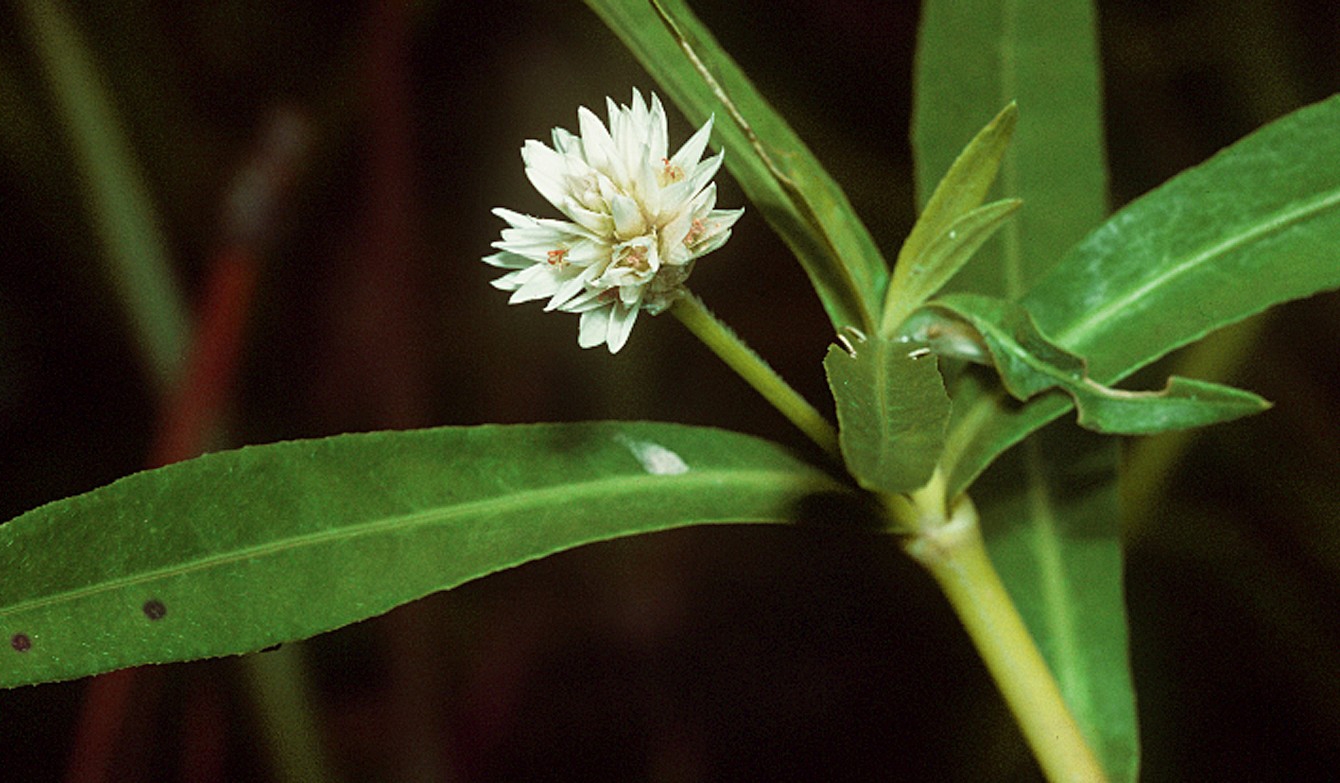
Alligator weed (Alternanthera philoxeroides, Amaranthaceae) is one of the more famous invasion plants in the world, colonizing in aquatic and dry terrestrial environments, and it is native to the temperate regions of South America. Alligator weed invades into various temperate and subtropical environments successfully, a phenomenon which has been well studied of due to its phenotypic plasticity and high rates of vegetative propagation and growth.1,2
In an attempt to identify the features that may permit the rapid adaptation of alligator weed to aquatic-terrestrial transition zones, we sampled terrestrial and aquatic plants and performed anatomical and histochemical analyses, examining the spatiotemporal development of its root and stolon tissues resulting from primary and secondary growth, aerenchyma, and apoplastic barrier permeability.3,4
Adaptative morphoanatomical characters will be helpful in interpreting this invasive plant’s ability to colonize a diverse range of ecological environments. To study the morphoanatomical features and apoplastic barriers, we sectioned samples under stereoscopy freehand. We used berberine hemisulfate–aniline blue and sulfuric acid digestion to stain the Casparian bands, Sudan red 7B for the suberin lamellae and cuticle, berberine hemisulfate as a tracer stain for barrier permeability, and Toluidine blue O to stain structure.5,6,7,8
In general, the morphology of terrestrial alligator weed consists of rhizomes, vertical rhizomes, stolons, and adventitious roots. The aged vertical rhizomes, stolons, and roots propagate rhizomes, stolons, and adventitious roots. In comparison, aquatic alligator weed consists of stolons and adventitious roots. The aged stolons propagated shoots and adventitious roots. The internodes of the aquatic stolons were longer than the terrestrial stolons, had a larger pith cavity, and fewer layers of secondary xylem rings and periderm. The differences between alligator weed structure are that the aquatic adventitious roots induced aerenchyma and lignin in the cortex, while terrestrial roots exhibited secondary growth with supernumerary cambia and dilatation parenchyma.
The impermeable apoplastic barriers of alligator weed consist of a lignified cuticle and an endodermis of the adventitious root and stem in both aquatic and terrestrial environments. The terrestrial stem and root possess a suberized and lignified periderm. The aquatic root has a lignified cortex and hypodermis.
The aged terrestrial roots have supernumerary cambia and dilatation parenchyma that produce secondary vascular bundles, parenchyma, and adventitious buds. The supernumerary cambia had two cambium strips; one is common among dicotyledons situated on the ridges of the primary xylem, and the other is dedifferentiated parenchyma outside of the primary phloem.
The air spaces consist of pith cavities and cortical aerenchyma in the stems and large aerenchyma in the aquatic roots that provide oxygen to submerged organs as observed in other aquatic-terrestrial species.3,4
Phenotypic plasticity of morphoanatomical features, such as the constitutive and induced impermeable apoplastic barriers, air spaces, and reproductive supernumerary cambia, facilitate alligator weed invaded to the aquatic-terrestrial transition environments. We suggest the phenotypic plasticity of morphoanatomical features in plants that might widely promote distribution and potential invasion.4,5,6,7,8
These findings are described in the article entitled Anatomical structures of alligator weed (Alternanthera philoxeroides) suggest it is well adapted to the aquatic–terrestrial transition zone, recently published in the journal Flora.
References:
- Pan, XY. et al. Invasive Alternanthera philoxeroides: biology, ecology and management. Acta Phytotaxon. Sin. 45, 884–900 (2007).
- Chen, LL. et al. Historical invasion and expansion process of Alternanthera philoxeroides and its potential spread in China. Biodivers. Sci. 16, 578–585 (2008).
- Seago Jr., JL. et al. A re-examination of the root cortex in wetland flowering plants with respect to aerenchyma. Ann. Bot. 96, 565–579 (2005).
- Armstrong, J. et al. Rhizome phyllosphere oxygenation in Phragmites and other species in relation to redox potential convective gas flow, submergence and aeration pathways. New Phytol. 172, 719–731 (2006).
- Yang, CD. et al. Root and stem anatomy and histochemistry of four grasses from the Jianghan Floodplain along the Yangtze River, China. Flora 206, 653 – 661 (2011).
- Yang, CD. et al. Anatomy and histochemistry of roots and shoots in wild rice (Zizania latifolia Griseb.). J. Bot. Vol. 2014, Article ID 181727 (2014).
- Zhang, X. et al. Structural features of Phalaris arundinacea L. in the Jianghan Floodplain of the Yangtze River, China. Flora 229, 100–106 (2017).
- Zhang, X. et al. Anatomical and histochemical traits of roots and stems of Artemisia lavandulaefolia and A. selengensis (Asteraceae) in the Jianghan Floodplain, China. Flora 239, 87–97 (2018).









